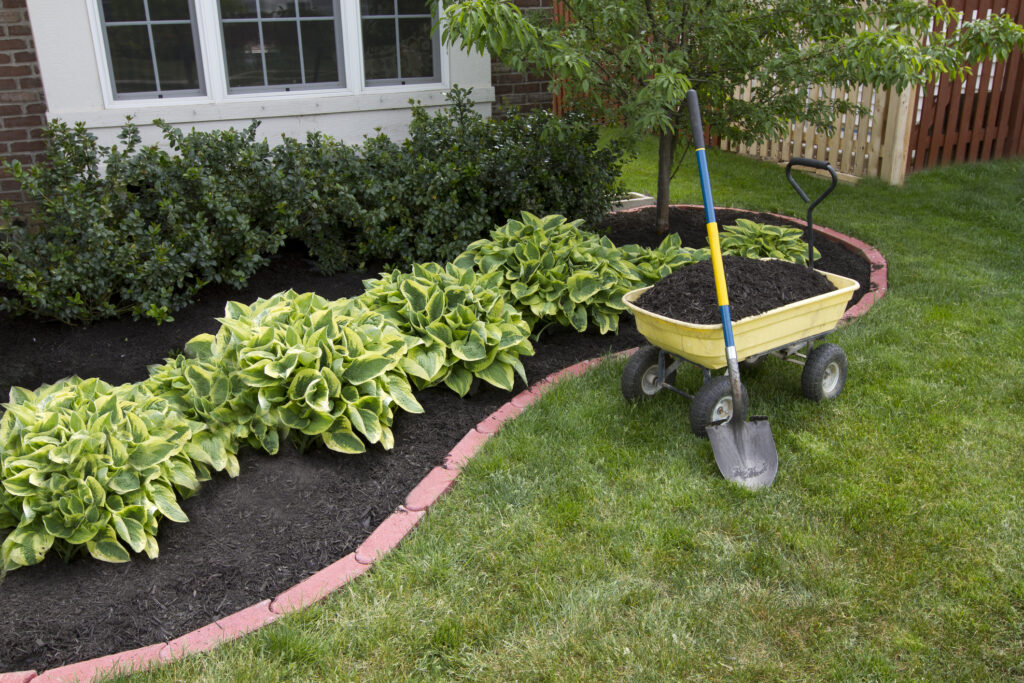Spring Yard Prep: Does Mulch Attract Bugs
Does mulch attract bugs? The short answer is yes, it can, but it depends on the type of mulch and how it is managed. Mulch is widely used in gardens and landscapes for its ability to retain soil moisture, suppress weeds, and enhance soil quality. However, these same properties can also make mulch attractive to a variety of insects and pests.

We all appreciate how mulch enhances the beauty and health of our flower beds and backyards, helping colors stand out and vegetation flourish. Organic mulches like wood chips, straw, and leaf piles play a crucial role by conserving soil moisture and adding nutrients as they decompose. This makes our gardens look good and remain vibrant and healthy.
However, the downside is that mulch creates a moist, sheltered environment that is perfect for many bugs. It can attract pests ranging from beetles that feed on wood to slugs that thrive in moist conditions. If mulch is applied too thickly or too close to the home’s foundation, it can even become a pathway for pests to enter.
Knowing this information helps us strike the right balance. While mulch can significantly boost your garden’s health and appearance, being mindful of how it might also attract pests will help you make smarter choices about the type of mulch you use and how you manage it.
Types of Mulch and Their Attraction to Bugs
Mulch comes in various forms, each with unique properties that can affect its tendency to attract insects. Understanding these differences is key to choosing the right mulch for your garden while minimizing pest problems.
Organic Mulches
These are made from natural materials that decompose over time, such as wood shavings, pine needles, and leaf litter. Organic mulches improve soil fertility as they break down but can attract a range of pests. Decomposing organic material generates warmth and releases nutrients, creating an inviting environment for insects like termites, ants, and beetles. Common organic mulches include:
- Wood Chip Mulch and Bark Mulch: Popular for their aesthetic appeal, these can attract termites and carpenter ants that feed on decomposing wood.
- Pine Straw and Grass Clippings effectively retain moisture but can also harbor slugs, snails, and fungal pests.
Inorganic Mulches:
Made from non-living, inorganic materials such as stones, rubber, or landscape fabric, inorganic mulches do not decompose and thus do not attract pests in the same way as organic options. However, they still cover the soil and retain moisture, which can attract pests looking for shelter. Types of inorganic mulch include:
- Rubber Mulch: Often made from recycled tires, rubber mulch is durable and doesn’t attract pests that feed on organic matter, but it can still shelter insects seeking moisture.
- Pea Gravel and River Rock: These options do not provide any nutritional benefit to pests but can provide hiding spots for various insects.
Specialty Mulches:
Some mulches are treated with additives to deter pests or are made from specific materials known for their pest-repellent properties.
- Cedar Mulch: Contains natural oils that repel some insects, including moths and certain beetles.
- Cypress Mulch: Like cedar, cypress has natural insect-repellent properties due to its aromatic oils.
When choosing mulch, consider your local pest species and the specific needs of your garden. For example, if termites are a common problem in your area, avoiding wood mulch or opting for termite-resistant types like cedar could be beneficial. Similarly, if moisture-loving pests like slugs are prevalent, a less moisture-retentive mulch might be the better choice. By selecting the appropriate type of mulch and applying it correctly, you can enjoy the benefits of mulching while minimizing pest issues.
Common Pests Associated with Mulch
Mulched areas can become hotspots for various pests, each drawn to the environment for different reasons. Here’s a closer look at some common pests that are attracted to mulch and why they find these settings appealing:
Termites:
The highest risk associated with mulch is the potential for termite infestation, especially subterranean termites. These insects are primarily attracted to moist conditions and the presence of decaying wood that serves as a food source, making wood mulches a potential risk area. Termite colonies can use mulch as a stepping stone to reach wooden structures, leading to significant damage over time.
Carpenter Ants:
Similar to termites, carpenter ants are attracted to moist, decaying wood. While they do not eat wood like termites, they excavate it to create nests, which can weaken wooden structures. Mulches that retain moisture and directly contact home foundations can inadvertently invite these ants closer to your living spaces.
Slugs and Snails:
These mollusks thrive in damp environments, which are often created by organic mulches like straw and grass clippings. They feed on young plant shoots and leaves, potentially ruining garden beds and flower arrangements.
Earwigs:
Known for their pinching cerci (pincers), earwigs seek out dark, moist environments often found under mulch. They primarily feed on decaying plant material but can also target living plants, especially when their populations become dense.
Fungus Gnats:
These tiny flying insects are more attracted to fungus and decaying organic matter than the plants themselves, but their presence can be a nuisance. Fungus gnats thrive in environments where there is excessive moisture and organic material, conditions often met by mulch.
By understanding the types of pests that mulch can attract, gardeners can be more strategic in choosing the type of mulch they use and managing their mulch layers to avoid attracting these unwanted visitors.
Preventative Measures and Mulch Management
To effectively use mulch without encouraging pests to take up residence, it’s crucial to implement sound management practices. Here are some preventative measures that can help you maintain the benefits of mulching while minimizing the attraction of pests:
Maintain Proper Mulch Thickness: It is ideal to keep the mulch layer around 2-3 inches thick. Too much mulch can lead to excess moisture retention, which creates an inviting environment for pests like termites and fungus gnats. A thinner layer allows the soil to breathe, reducing the risk of pest infestations.
Avoid Direct Contact with Structures: When applying mulch, ensure it does not directly touch the foundations of buildings, wooden decks, or sidings. This gap prevents termites and carpenter ants from easily accessing your home or structure, reducing the likelihood of infestations.
Select Appropriate Mulch Types: Choose mulches that are less likely to attract pests. For example, cedar and cypress mulches contain natural oils that repel certain insects. Inorganic mulches like pea gravel or rubber mulch do not support the life cycle of pests that require organic material, thus, they might be a better choice in areas prone to infestations.
Regular Inspection and Turnover: Periodically check and turn over your mulch to disrupt any beginning stages of pest colonies or fungal growth. This practice helps expose any hidden pests to predators and dries out excessively moist areas, making them less appealing to pests.
Vegetation and Weed Control: Keep the area around the mulched sections clean and trimmed. Overgrown vegetation can contribute to higher humidity levels and create additional hiding spots for pests. Regularly pruning and managing plant growth can help deter pests from settling in.
Use of Natural Repellents: Consider integrating natural pest repellents into your garden strategy. Planting pest-deterrent plants like marigolds or using essential oils can add an extra layer of protection against bugs.
By adopting these strategies, you can enjoy mulch’s aesthetic and horticultural benefits while significantly reducing the potential for pest problems. These practices help protect your garden and support the overall health and sustainability of your outdoor environment.
How Bug Tech Can Help Protect Your Home from Pests
At Bug Tech, we recognize that while mulch can enhance the beauty and health of your garden, it also has the potential to attract pests. To address this, we offer specialized services that help keep your garden and home pest-free. Our team of experts conducts thorough inspections to identify any signs of pest activity or risks associated with mulch. Following the inspection, we provide personalized pest control plans tailored to the specific needs of your garden and home environment.
Our approach is grounded in Integrated Pest Management (IPM), which emphasizes environmentally sensitive methods. This means we use a combination of biological, cultural, mechanical, and chemical strategies to achieve effective and sustainable pest control. By focusing on prevention and customized solutions, we ensure that your mulch benefits your plants without becoming a home for pests.
Regular monitoring and maintenance are key components of our service. We continually assess the effectiveness of the implemented strategies and make adjustments as needed. This proactive approach helps manage current pest issues and prevents future infestations, ensuring that your garden remains a vibrant and healthy environment. With Bug Tech, you can enjoy the aesthetic and practical benefits of mulching while keeping your garden safe from unwanted pests.
